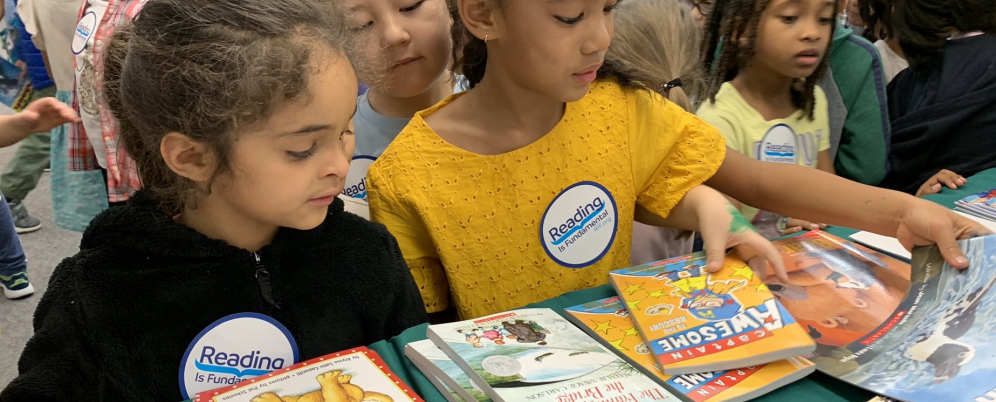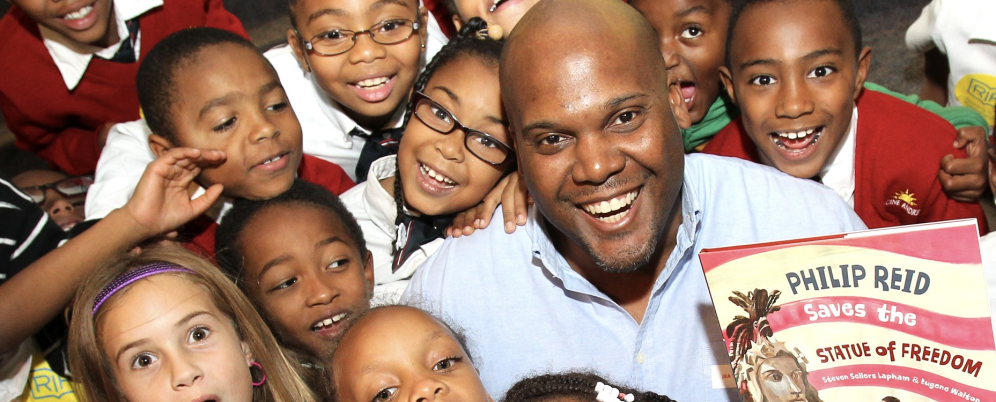Why I Read Aloud to my Children (and Think You Should Too)
New research shows that parents are losing the love of reading aloud. At RIF, we know just how dire these new findings can be for a children’s reading development. Read on to hear from RIF’s own Dr. Erin Bailey about why she reads to her children and then be sure to explore RIF’s free read-aloud support resources.
It’s a common scene in my household each morning: my toddler sits across from me on my lap as I read aloud How Loud Is a Lion? By Shella Blackstone and Clare Beaton.
As I read each repetitive page, “Parrots are feathery, porcupines are prickly, But how loud is a lion? Shh! Listen!” my son puts his pointer finger up to his lips and makes the word “shh” with me.
I hear my older daughter echoing the lines “parrots are feathery, porcupines are prickly” in the other room. Meanwhile, my infant son is close by doing tummy time and soaking it all up. And this is the third time we’ve read this book this morning…
As a literacy expert, it seems obvious to me why I read aloud to my kids. The research is clear on all the benefits of reading aloud. But I also do it because it is something my parents did with me and because I find it enjoyable.
You can imagine my surprise when I read the results from a recent survey by HarperCollins UK1 that found only 41% of children ages birth through four are read aloud to frequently and fewer than half reporting that reading to children is “fun for me.” More specifically, 28% of GenZ parents perceive reading as a “more a subject to learn” than an engaging activity.
Many agree that decreases in reading for pleasure are associated with increases in screen time. As families are competing with screens, they lose out on quality time to read aloud with their children.
Let’s explore why reading aloud with your children is so important. I’ve categorized the importance into three dimensions: linguistic, material, and affective.
One of the first things that comes to mind when thinking about the benefits of reading aloud with young children is the impact on their language development. Reading one picture book per day makes a big impact. Comparatively, 2-to 3-year-old children who are read aloud to daily hear approximately 140,868 words per year compared to 2,214 words per year for children read to less than once per week2. These differences in exposure to language compound over time.
But hearing words is just the beginning. There is a material component to learning language. Remember when I said my toddler son was sitting across from me? This was very intentional. As I read the book, not only could he hear the words, but he could see the shapes that I make with my mouth when I read the words. This led him to be able to round his lips with a slight opening, put his front teeth together, push his tongue towards the roof of his mouth, and push air out. Shhhh. Listen!
ROARR!!!
Did that sudden interjection of the lion roaring catch you off guard? Did it send shivers up your spine or make you laugh? Welcome to the affective dimension of reading aloud. The feelings we feel and the connections we build with our children are an essential part of the reading experience. Research has even demonstrated that when young, hospitalized children listened to stories they had higher levels of oxytocin—the neurotransmitter associated with pleasure3. Reading aloud creates a bond between parent and child that can help children feel calm and safe.
Back in my living room, my son snaps the book closed and runs off. Storytime is over for today. I don’t mind rereading the same book over and over nor do I mind when our reading session abruptly ends. Because I know that starting a reading routine early is the key to unlocking the linguistic, material, and affective benefits of reading. I also know he’ll want to pick up the same book for us to read together tomorrow.
Maybe it’s the Millennial parent in me, but I hope we can find a way to reignite the joy in reading aloud to build a better future for our readers and keep this meaningful reading tradition alive, despite the growing distractions of technology.
References
1 New research reveals that parents are losing the love of reading aloud - HarperCollins Publishers - HCUK Corporate
2 Logan, J. A., Justice, L. M., Yumus, M., & Chaparro-Moreno, L. J. (2019). When children are not read to at home: The million word gap. Journal of Developmental & Behavioral Pediatrics, 40(5), 383-386.s
About Dr. Erin Bailey, Vice President, Literacy Programs & Research
Dr. Bailey has been an educator in U.S. and international classrooms. Her teaching experience spans from PreK-8 including roles as a classroom teacher, literacy specialist, English language learning specialist, and university instructor. Her interests include professional learning for teachers on family and community engagement, instructional strategies for multilingual learners, and literacy instruction. She is interested in the ways that partnering with families and communities, particularly for children from historically marginalized communities, can transform literacy instruction. Additionally, she designs curriculum and professional development for utilizing play-based learning to teach language and literacy to young children.

